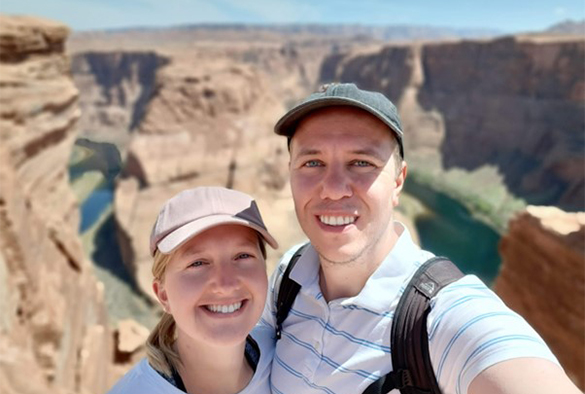AVA Fellow Interviews – Spotlight on Miha Cerv

Now the formal period of the project has come to an end, this is a good moment to look back at the Fellows’ time with AVA. We have asked the Fellows a few questions as part of the AVA Spotlight Interview series; this will give you a more personal insight into their motivation, achievements and outlook. For this interview we have spoken with Miha Cerv who joined the AVA network at CIVIDEC in April 2018. During his Fellowship he was working on diamond detectors for beam characterization. His project focussed on the use of Ultra-thin Diamond Detectors as beam position and profile monitors in low energy antiproton beam lines.
What attracted you to the AVA network? Has it fulfilled your expectations?
What attracted me to the AVA network the most was the topic itself. Working in the scientific field and especially with antimatter sounded cool. Another interesting point was the possibility of collaborating with an international group of people. Moving to another country, although a bit daunting, sounded exciting. In the end it turned out to be a very good decision to apply.
Why did you choose to go to CIVIDEC?
Most of the positions were meant for physicists, but CIVIDEC was one of the few meant for engineers. The background I had in electronics, especially experience with FPGA and a bit with detectors, this was a good fit for me. The relative proximity of Vienna to my hometown was also a plus.
Can you explain in a few words what your project was about and what have you achieved?
Diamond detectors are the main product of CIVIDEC and they were also the main focus of my project. During AVA, I was testing and characterizing diamond detectors with laboratory radiation sources. I was developing FPGA implementations for real-time data signal analysis, such as rate measurements, spectroscopy and particle identification. A major achievement was a measuring campaign at the Grace beamline of the AeGIS experiment at CERN, where I measured the antiprotons with a diamond detector.
What has AVA provided you professionally?
This was my first real employment, so AVA has given me a kickstart in my career. It has provided me with a lot of detailed knowledge and experience. Most importantly, I learned that complex issues that seem overwhelming at first, can be tackled if you really put your mind to it. And also that there are always people who know more about a certain topic, so you can rely on them for help.
Can you say something about your next career move?
My current employment is at MedAustron in Wiener Neustadt. It is an ion treatment facility with a synchrotron accelerator. My work is related to FPGA development, so I can say that what I learned during AVA is very useful for my current work. I liked working in the field of particle physics already during AVA, but seeing the same principles being used for actual, non-academic applications is on a whole other level.
What will be your most cherished memory from AVA?
The best memories will of course be of the group events. The one that immediately comes to mind is the Liverpool outreach symposium in 2019. After the official program, there was a nice dinner and after that we were dancing. I really enjoyed that everybody was in a good mood and we partied together.